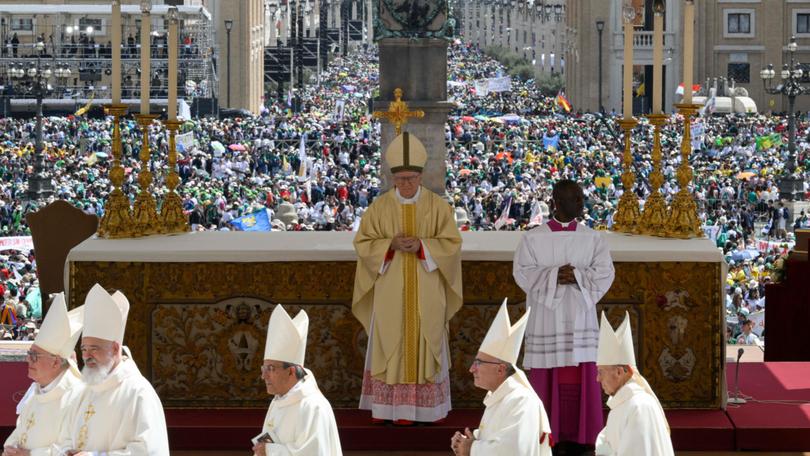Huge crowds flock to view Pope Francis’s tomb in Rome as cardinals meet to decide conclave date

Pope Francis’s modest tomb drew massive queues on the first day of public viewing in Rome on Sunday, a day after an estimated 400,000 people turned out for his funeral and burial.
Tens of thousands flocked to Santa Maria Maggiore Basilica - Francis’s final resting place - in another testament to the popularity of the Argentine, who died aged 88 last week.
All eyes turn now to the conclave, the secretive meeting of cardinals set to convene within days to elect a new pontiff.
Sign up to The Nightly's newsletters.
Get the first look at the digital newspaper, curated daily stories and breaking headlines delivered to your inbox.
By continuing you agree to our Terms and Privacy Policy.Cardinals will held their fifth general meeting today since the pope’s death, at which they are expected to pick a date for the conclave.
On Sunday, most joined the crowds at Santa Maria Maggiore, to attend an afternoon ceremony in tribute to the late pontiff.
“What I expect from his successor is that he continues (Francis’s) work,” said Malian cardinal Jean Zerbo, 81.
The Church needed to avoid divisions in picking a new leader, he said.
“The message (Francis) left the world was one of openness, not closure. Welcoming everyone, especially the poorest.”
Luxembourg Cardinal Jean-Claude Hollerich said last week he expected the conclave to take place on May 5 or 6 -- shortly after the nine days of papal mourning, which end on May 4.
German Cardinal Reinhard Marx said on Saturday the conclave would last just “a few days”.
Cardinal Marx said the debate over the next pope was open, adding: “It’s not a question of being conservative or progressive... The new pope must have a universal vision.”
Italian Cardinal Pietro Parolin - who was secretary of state under Francis and is a frontrunner to become the next pope - led a mass on Sunday morning in St Peter’s Square, which drew 200,000 people according to the Vatican.
Only cardinals under the age of 80 are eligible to vote in the conclave. There are 135 eligible, most of whom Francis appointed himself.

Experts caution against assuming the cardinals will choose someone like Francis.
A former archbishop of Buenos Aires who loved being among his flock, Francis was a very different character to his predecessor Benedict XVI, a German theologian better suited to books than kissing babies.
Benedict in turn was a marked change from his Polish predecessor, the charismatic, athletic and hugely popular John Paul II.
Francis’s changes triggered anger among many conservative Catholics, who hope the next pope will turn the focus back to doctrine.
Some cardinals have admitted the weight of the responsibility that faces them in choosing a new head of the world’s 1.4 billion Catholics.
